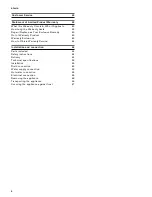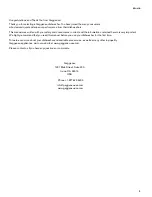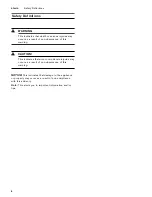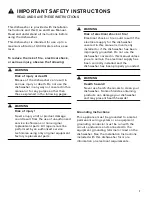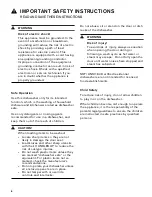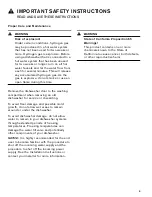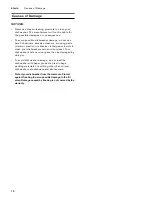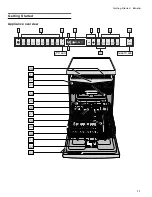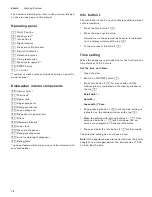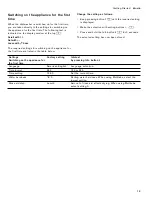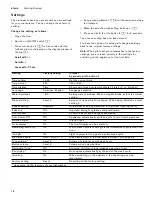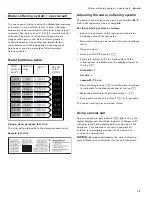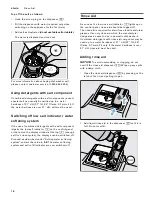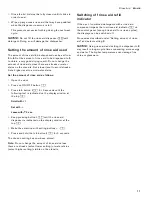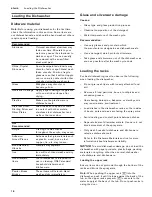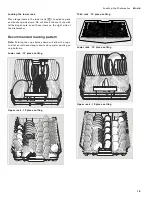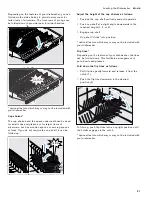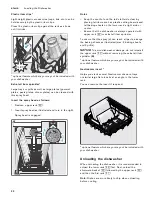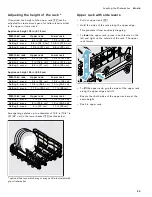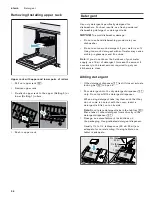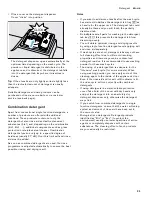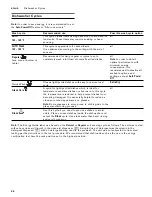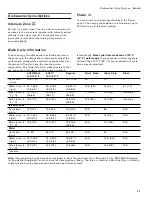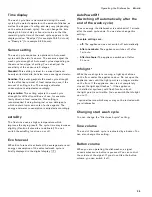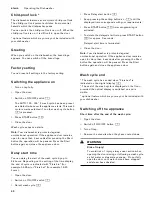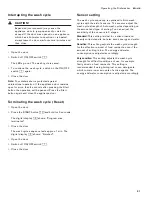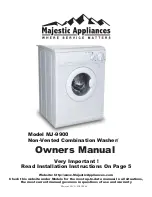
16
en-us
Rinse Aid
Top off the salt as follows:
1.
Undo the screw plug on the dispenser
1R
.
2.
Fill the dispenser with water (required only when
switching on the appliance for the first time).
3.
Add salt as illustrated
(do not use table salt or tablets)
.
The water is displaced and runs out.
For more information about buying dishwasher salt,
please contact customer service (1-800-944-2904).
Using detergents with salt component
If combined detergents with a salt component are used,
special salt can usually be omitted up to a water
hardness of 21° dH (37° fH, 26° Clarke, 3.7 mmol/l). If
the water hardness is over 21° dH, salt must be used.
Switching off low salt indicator / water
softening system
If the use of combined detergents with a salt component
impairs the low salt indicator
P
on the control panel
or the text on the display window at the top
@
(enough
salt for x rinse cycles), the displays can be switched off.
Proceed as described under “Setting water softening
system” and set the value to
0-8
. The water softening
system and salt refill indicator are now switched off.
,
Rinse Aid
Rinse Aid
As soon as the low rinse aid indicator
H
lights up on
the control panel, rinse aid should be topped off.
The rinse aid is required for stain-free utensils and clear
glasses. Use only rinse aid which the manufacturer
designates as save to use in domestic dishwashers.
Combined detergents with rinse aid component may be
used up to a water hardness of 21° dH (37° fH, 26°
Clarke, 3.7 mmol/l) only. If the water hardness is over
21° dH, rinse-aid must be used.
Adding rinse aid
NOTICE:
To avoid oversudsing or clogging, do not
overfill the rinse aid dispenser
9"
. Wipe up any spills
with a damp cloth.
1.
Open the rinse aid dispenser
9"
by pressing on the
latch of the lid and pulling it open.
2.
Add liquid rinse aid to the dispenser
9"
until it is
full. Do not overfill.
PD[



